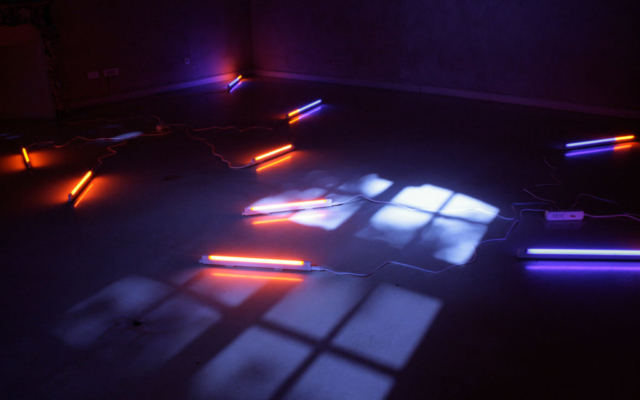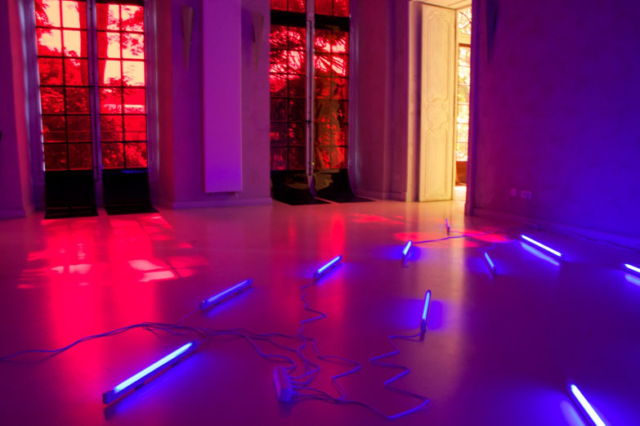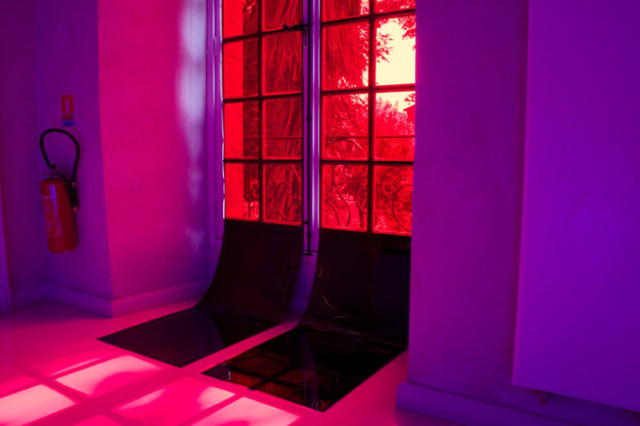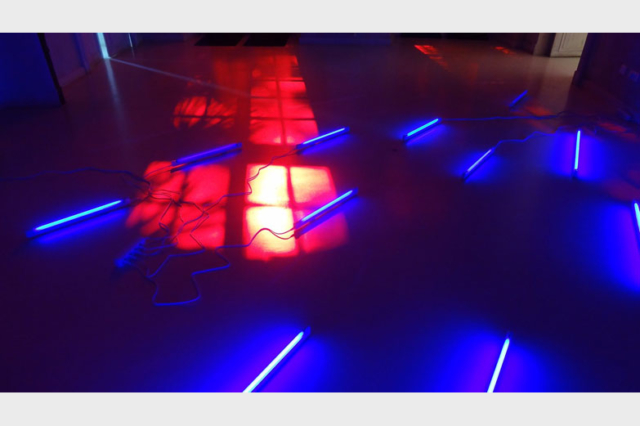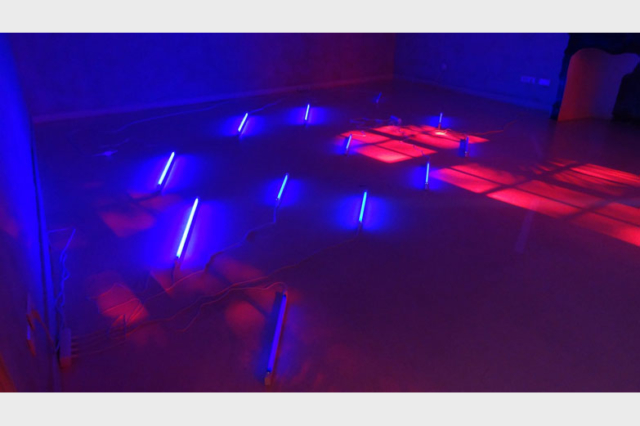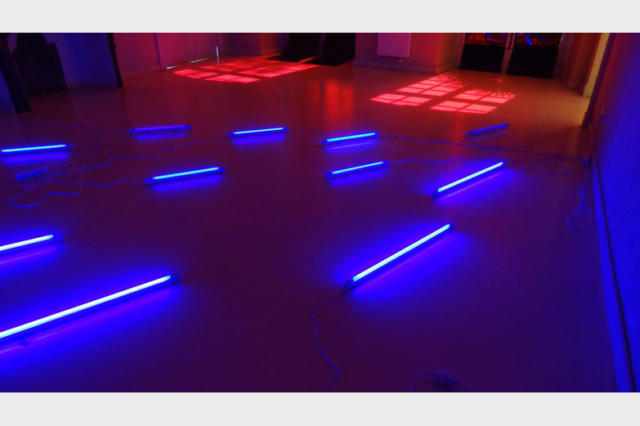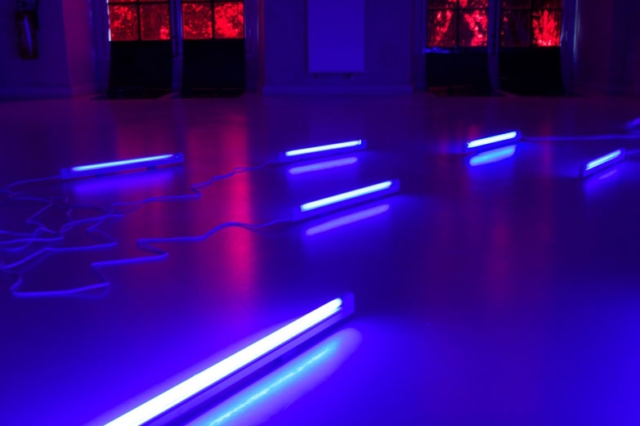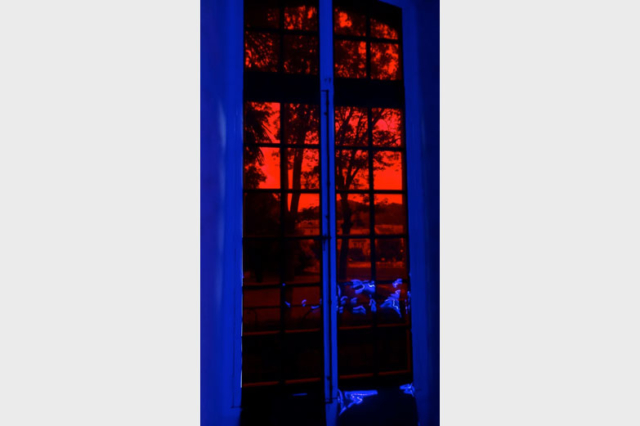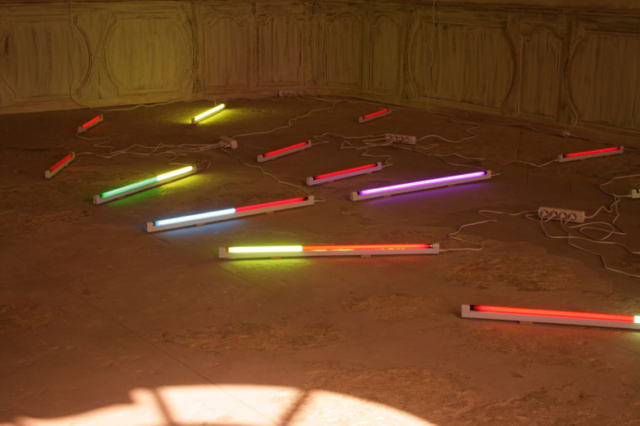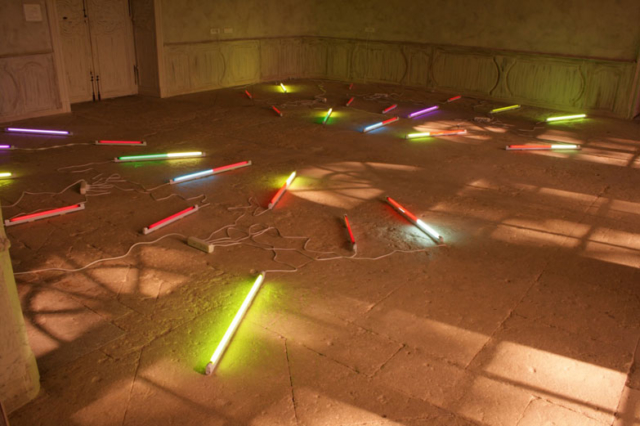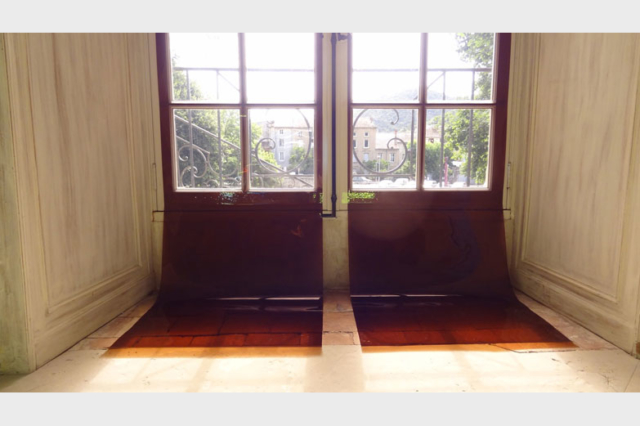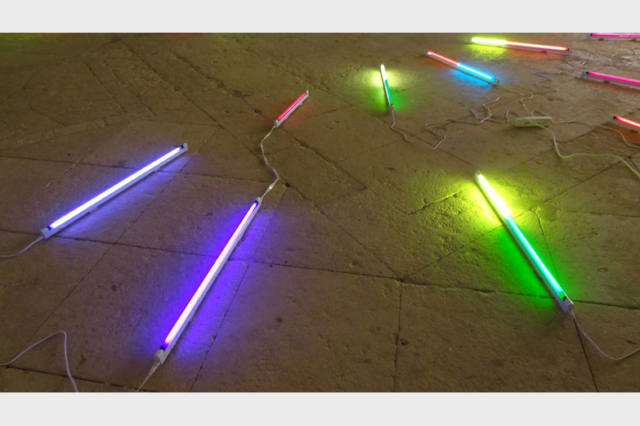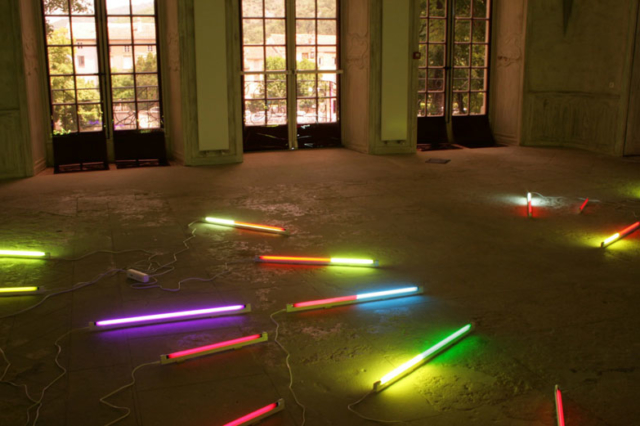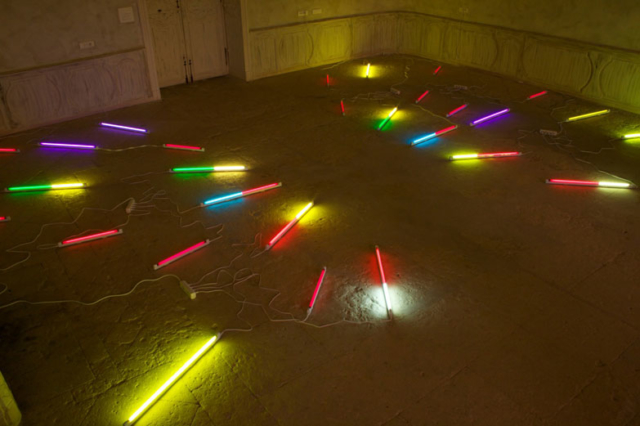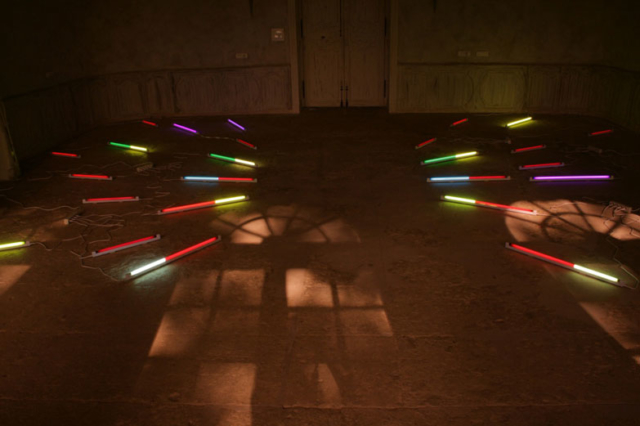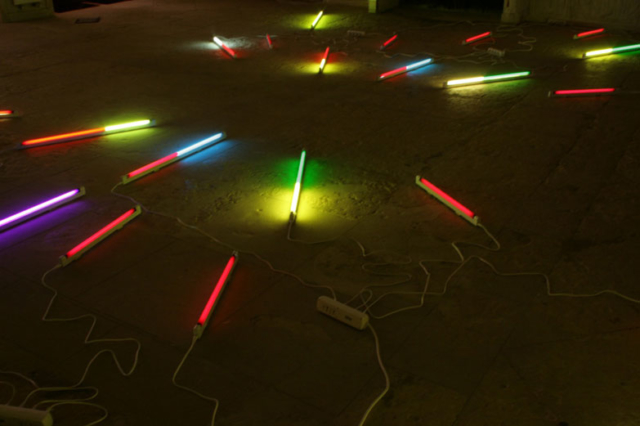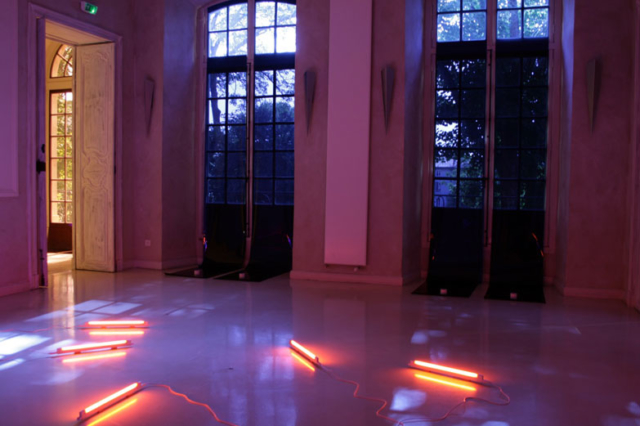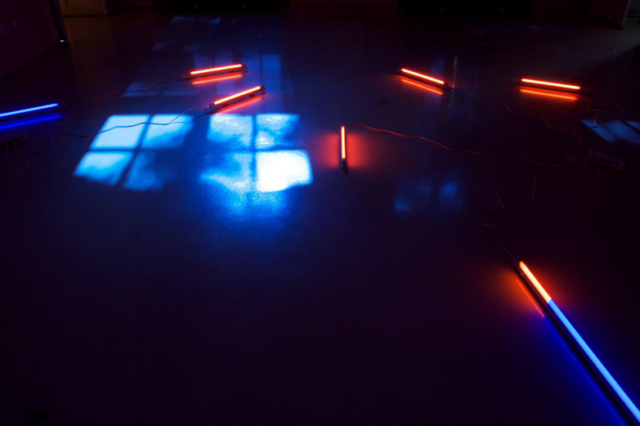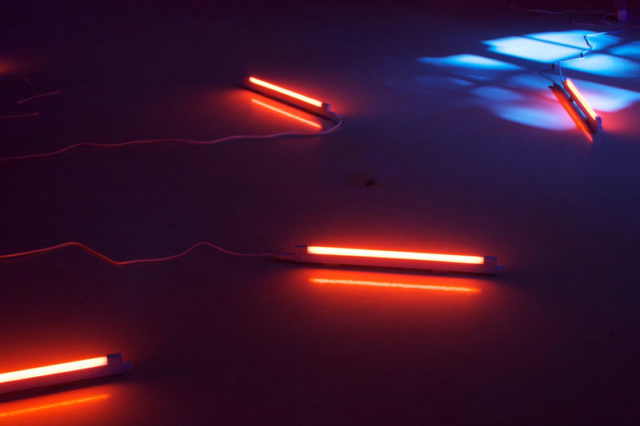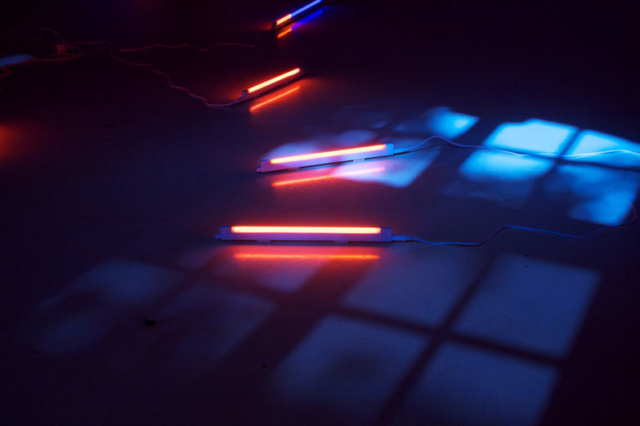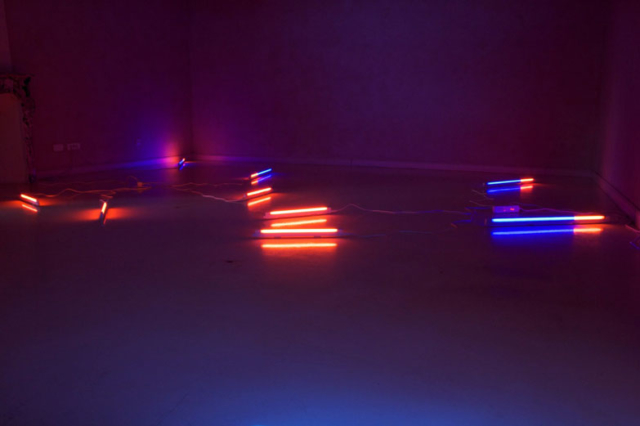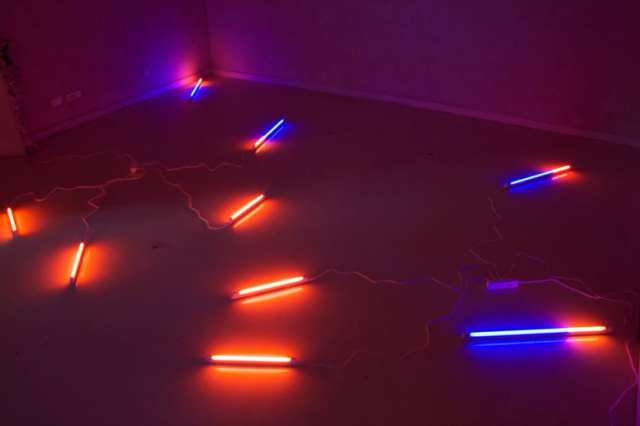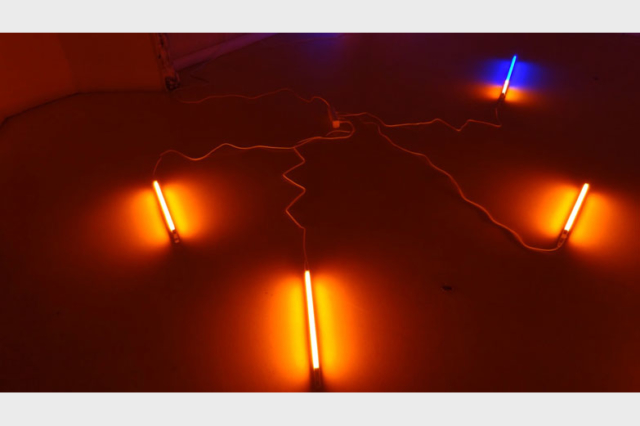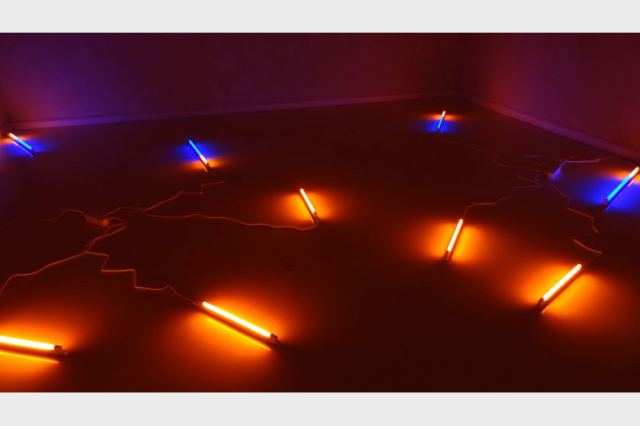Château d’Assas, Le Vigan (Gard), France
2012, Exhibition
Light is at the centre of the work, which lights our way to another space, that of the atmosphere of the planet Mars. Neither time nor space have their own place in this exhibition, they refer to somewhere else. Motionless lines of light are arranged according to three different patterns, in line, gradually, or dotted about like stars, creating a path that leads to other spaces, that leads elsewhere. The arrangement of luminous lines, as if slightly suspended above the ground, creates a certain depth of field for a space that is otherwise volumetric. The place/the places are transformed. Filtering natural light, entering through the large windows of the exhibition space, large filters reflect their own chromatic essence and flood the three spaces, marking three time points in a day on the planet Mars: dawn-noon-dusk. The three systems are like superimpositions of light, luminous phenomena, and simultaneously bring about the reflection of each light space. The space now engenders its own temporality.
The atmosphere on Mars is rich in Argon, a rare gas, its quantity is constant in the Martian atmosphere. The fluorescent lamps contain a mixture of argon and mercury vapour at low pressure. The ionisation of this mixture of gases, under the effect of an electrical charge, generates beams in the ultra-violet range, invisible to our eyes but very energetic. This first beam is then transformed into visible light. That of the luminous lines made of fluorescent tubes in each of the three systems. The work then generates three types of light.
An atmosphere is like an ocean of air; three moments in the Martian atmosphere immerse visitors to adjacent exhibition areas at the Château d’Assas.
Description
The exhibition consists of a set of three space and light systems installed in the three rooms. In each space, a group of fluorescent lamps with gel filters are placed on the floor, slightly raised, each forming a unique configuration and a chromatic group. The general luminous atmosphere in each room is translated in two ways, first by the coloured light from the fluorescent lamps, and second by the application of a coloured gel filter (one colour per space) in front of the windows, allowing natural (summer) light to enter and bathing and immersing the three spaces in different ways.
Coloured gel filters, fluorescent tubes, wood
